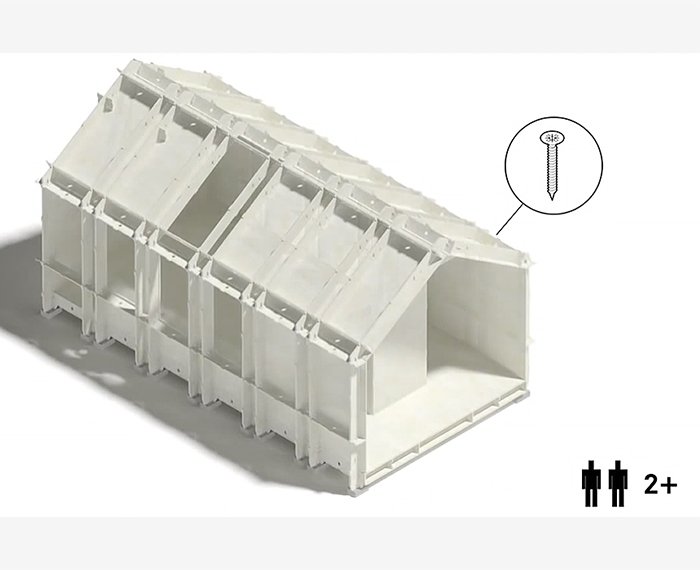Saving our planet should be our top priority right now. With climate change already possible to see in many places and people already suffering from these changes, a focus on innovation to improve sustainability for a better future is fundamental to our survival. Some motivated and inspiring individuals are already working hard on this, and are unsung heroes in driving lasting change. In 2014, Tristan Copley Smith wrote of some of these projects, explaining that open source working is providing people with the access that they need to knowledge, culture and tools that is allowing them to help drive change. Smith argues that:
“Open stands as a definitive yet diverse movement, void of historic or cultural stigma under which many disparate but synergistic disciplines are sharing, collaborating and innovating”.
He provides radical examples such as WikiLeaks and Open Source Ecology. In particular, Tristan Copley Smith focuses on 10 open hardware projects that have a goal of saving the earth. But what are these inspirational projects? Each is now explained in turn:
1. FarmBot – FarmBot aims to solve the challenge of agricultural efficiency. This is extremely important in a world where the population is expanding “exponentially”. The founder of FarmBot has a goal of “opening up agricultural technologies” with the idea of helping people to get more efficient at producing food.
2. Precious Plastics – the recycling of plastics is a problem, and plastics are ending up floating in our oceans, polluting not only our seas, but also the islands that they eventually get washed up on. The problem is that recycling of plastics only has limited applications. This led Precious Plastics to showcase machines that are open source that have a goal of repurposing plastics waste into things that are new and useful. In particular it is possible to create a local micro-recycling centre from these tools, to serve community requirements.
3. WikiHouse – as you might expect, Smith describes WikiHouse as an “open source construction”. The idea behind this is that users are able to access files, buy plywood and cut out designs to be able to create a house. All of the different pieces can be brought together to build a house, and so this has opened up house building to a far wider audience. The following video explains the concept behind wikihouse, The following video is a TED talk done by Alastair Parvin: Architecture for the people by the people, that explains the philosophy behind wikihouse:
4. Open Source Beehives – the collapse of bee colonies is a major concern. This project by OSBH helps people to protect bees by lowing them to put sensor-enhanced bee conservation into their gardens.
5. Spark.io – this development is designed to aid the Internet of Things. The Internet of Things is essentially an approach to make dumb objects smarter, so that currently inanimate objects like refrigerators and cars are able to be connected. Spark.io is an open source idea that has developed a board that allows even people that are not programmers to be able to work to start to make their hardware smarter in nature.
6. Public Lab – this idea is creating open source hardware tools with a goal of increasing knowledge and sharing data that relates to community environmental health. It effectively enables people to be able to take care of their own environment and fix some of the problems faced locally.
7. Lasersaur / Blackfoot – this technology is comprised of digital fabrication tools that enable open hardware designs to be transformed from digital into real life. Lasersaur and Blackfoot are two projects that provide the opportunity to access these tools more cheaply, in this case specifically in the areas of CNC milling and laser cutting.
8. The Gasifier Experimenters Kit – this is an open source kit that allows people to see if they can transform their biomass or compost into energy. The kit enables people to lower their carbon footprint and reduce the level of waste that they create. In the future this technology will be available for free.
9. Zenman Energy – this open source energy project focuses on solar power. The goal with this development is to allow people to use a cheap solar concentrator to get power from the sun for use for their energy needs.
10. The Tabby – last but not least, the Tabby is an electric car that is open source. It is allegedly able to be assembled within just one hour. The project is relatively new and it will be interesting to see what happens with this over time.

Paula Newton is a business writer, editor and management consultant with extensive experience writing and consulting for both start-ups and long established companies. She has ten years management and leadership experience gained at BSkyB in London and Viva Travel Guides in Quito, Ecuador, giving her a depth of insight into innovation in international business. With an MBA from the University of Hull and many years of experience running her own business consultancy, Paula’s background allows her to connect with a diverse range of clients, including cutting edge technology and web-based start-ups but also multinationals in need of assistance. Paula has played a defining role in shaping organizational strategy for a wide range of different organizations, including for-profit, NGOs and charities. Paula has also served on the Board of Directors for the South American Explorers Club in Quito, Ecuador.












